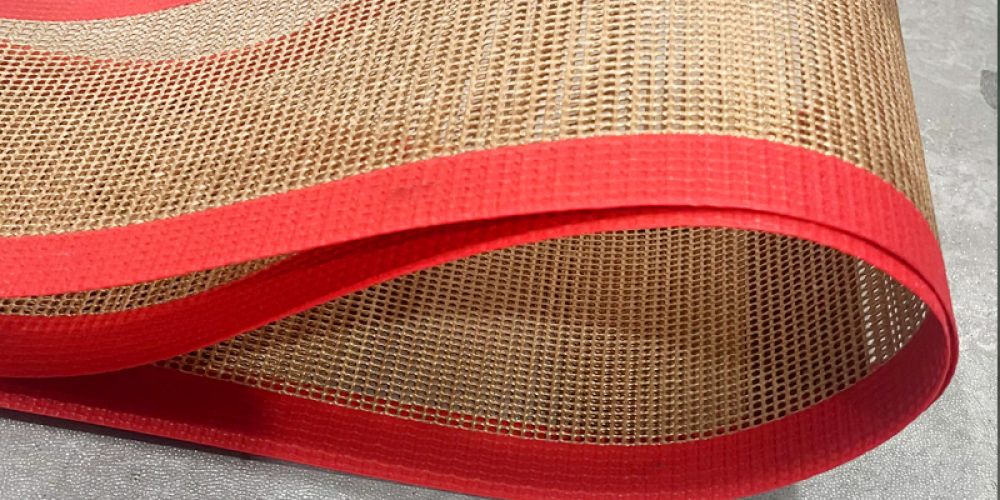
The heat sealing of Teflon conveyor belt (PTFE conveyor belt) is a professional and delicate process. The following is a more specific heat sealing step:
Material preparation: Ensure that the quality of Teflon conveyor belt and edge sealing materials (such as Teflon tape or other suitable edge sealing materials) is good, without damage, stains, etc.
Equipment preparation: Prepare a heat sealing machine or dedicated heat sealing equipment to ensure that it operates normally and the temperature is accurately controlled.
Work area preparation: Keep the work area clean and tidy to avoid debris interfering with the heat sealing process.
Cleaning the edge of the conveyor belt: Use appropriate solvents and cleaning tools (such as dust-free cloth) to thoroughly clean the edge of the Teflon conveyor belt to ensure that there are no impurities such as oil, dust, etc.
Pretreatment of edge sealing materials: Depending on the characteristics of the edge sealing material, pretreatment may be required, such as cutting to the appropriate size, removing protective film, etc.
Positioning edge sealing materials: Place the edge sealing material accurately on the edge of the conveyor belt to ensure alignment and tight fit. Positioning fixtures or manual fixing can be used to prevent movement during the heat sealing process.
Adjust the heat sealer: adjust the heating area and pressing force of the heat sealer according to the width and thickness of the conveyor belt and edge sealing material.
Preheating: Start the heat sealer and preheat to the appropriate temperature. The preheating temperature should be determined according to the melting point of the Teflon material and the heat sealing requirements.
Heat sealing: Feed the conveyor belt and edge sealing material into the heating area of the heat sealer and keep it for a period of time so that the edge sealing material and the edge of the conveyor belt are fully integrated. The heat sealing time should be determined according to the heat sealing speed and thickness of the material.
Pressing: During the heat sealing process, ensure that the heat sealer applies appropriate pressure to promote the close combination of the edge sealing material and the conveyor belt.
Cooling: After the heat sealing is completed, let the conveyor belt and edge sealing material cool naturally at room temperature, or use cooling equipment to accelerate cooling. The cooling time should be determined according to the type of material and heat sealing conditions.
Curing: Ensure that the heat-sealed part is fully cured to improve the strength and durability of the edge sealing. The curing time depends on the type of material and heat sealing conditions.
Inspection: Check the conveyor belt after heat sealing to ensure that the edge is flat, free of bubbles, cracks and other defects.
Trimming: If necessary, trim the edge, such as removing excess edge material, grinding and smoothing.
During the entire heat sealing process, appropriate personal protective equipment, such as gloves, goggles, etc., should be worn to prevent burns or other injuries. At the same time, ensure that the safety protection devices of the heat sealing equipment are intact and effective to avoid accidents.
Through the above steps, the heat sealing of the Teflon conveyor belt can be completed. In actual operation, adjustments and optimizations should be made according to the specific equipment and materials to obtain the best edge sealing effect.